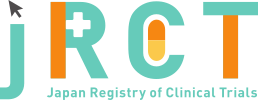臨床研究等提出・公開システム
|
April. 07, 2023 |
|
|
Oct. 03, 2025 |
|
|
jRCT2011230001 |
A Phase 3, Randomized, Double-blind, Placebo-controlled Study to Evaluate the Efficacy and |
|
Efficacy and Safety of Deucravacitinib Compared with Placebo in Participants with Active SLE |
Hobar Coburn |
||
Bristol-Myers Squibb |
||
1-2-1 Otemachi, Chiyoda-ku, Tokyo |
||
+81-120-093-507 |
||
mg-jp-clinical_trial@bms.com |
||
Hobar Coburn |
||
Bristol-Myers Squibb |
||
1-2-1 Otemachi, Chiyoda-ku, Tokyo |
||
+81-120-093-507 |
||
MG-JP-RCO-JRCT@bms.com |
Not Recruiting |
Mar. 30, 2023 |
||
| May. 24, 2023 | ||
| 490 | ||
Interventional |
||
randomized controlled trial |
||
double blind |
||
placebo control |
||
parallel assignment |
||
treatment purpose |
||
-Diagnosed with Systemic Lupus Erythematosus (SLE) at least 24 weeks before the screening visit |
||
-Diagnosis of drug-induced SLE rather than idiopathic SLE |
||
| 18age old over | ||
| 75age old under | ||
Both |
||
Systemic Lupus Erythematosus |
||
-Deucravacitinib |
||
Proportion of participants who achieve Systemic Lupus Erythematosus Responder Index-4 [SRI(4)] response at week 52 |
||
-Proportion of participants who achieve BICLA response at Week 52 |
||
| Bristol-Myers Squibb |
| Asahikawa Medical Center Institutional Review Board | |
| 7-4048 Hanasakicho, Asahikawa-shi, Hokkaido | |
+81-166-51-3161 |
|
| Approval | |
Jan. 17, 2023 |
No |
|
| NCT05620407 | |
| CT.gov |
USA/Argentina/Australia/Brazil/Chile/Czech Republic/Hungary/Mexico/Poland/Portugal/Spain/Taiwan/United Kingdom/Peru/Greece/Singapore |
